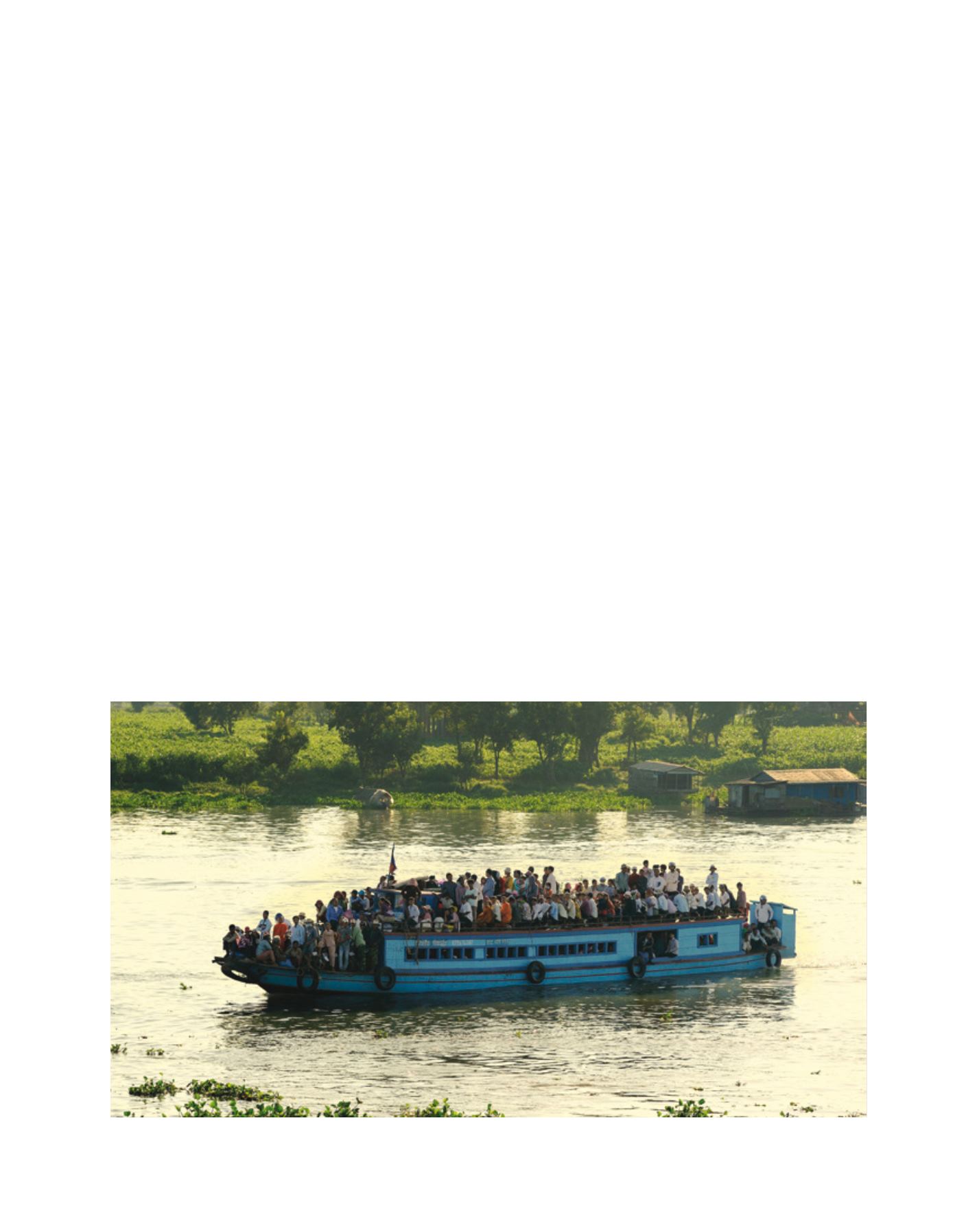

[
] 71
T
ransboundary
W
ater
M
anagement
development was happening and it was imperative to
ensure that the move to coordinated and coopera-
tive development took full account of transboundary,
social and environmental impacts and led to substan-
tive, positive development outcomes.
The primary products at the end of the BDP were
a basin-wide cumulative impact assessment of the
countries’ water resources development plans and the
Basin Development Strategy. The latter was a consen-
sus product that described strategic priorities for basin
development and management, specifically in order to
move identified development opportunities to imple-
mentation. The difficulty encountered in the BDP is
not surprising considering the differences between the
countries – sovereign nations, national development
plans, water and non-water sectors, differing devel-
opment priorities, varying levels of socioeconomic
development and different political systems.
In January 2011 15 years after the Mekong Agreement
was signed, the MRC Council adopted the integrated
water resources management (IWRM) based Basin
Development Strategy, which sets out the shared under-
standings of the opportunities and risks of the national
plans for water resources development in the LMB. The
strategy established 15 strategic priorities to address
knowledge gaps, optimize development opportunities
and minimize uncertainties and risks associated with
them. It is implemented through a Basin Action Plan.
This was an important milestone, reintroducing a focus
on water development to support poverty reduction
and economic growth, and complementing the focus of
water management.
develop the Basin Development Plan (BDP), establishing a set of
procedures for information exchange, water use monitoring, main-
taining minimum flows, notification and consultation on water
use projects and maintaining water quality. Parallel work was
undertaken on transboundary Environmental Impact Assessments
(tbEIA), navigation protocols, regional fisheries management,
flood warning and several different monitoring protocols.
Practical experiences
A key area of active engagement between the MRC member coun-
tries is the Basin Development Strategy. The mandate for the BDP
is clearly framed in the Mekong Agreement. However, practical
engagement in developing the BDP did not begin until late 2001,
six years after the agreement was signed. This was attributed to
different perceptions on basin planning among riparians, weak-
nesses in the MRC Secretariat and differing views of development
partners on the BDP.
The BDP’s first phase focused primarily on planning processes
and tools including a knowledge base and modelling capability, on
non-controversial projects, and on building relationships. These are
necessary but insufficient conditions for cooperation and develop-
ment, which also requires products – actions and outcomes.
By 2006, when the second phase of the BDP was launched, the
LMB had changed greatly, with water investments in national
programmes taking place due to rapidly increasing water, food
and energy demand and growing private sector involvement,
particularly in hydropower and commercial agriculture. This
shift from dependence on multilateral banks and their safeguards
underscored the need for strengthened national regulatory frame-
works. The BDP moved beyond process alone to focus on water
development at national and regional levels, without returning to
the earlier almost exclusive focus on water infrastructure. Mekong
Water resources in the basin will play an important role in the development of the LMB countries
Image: MRC


















